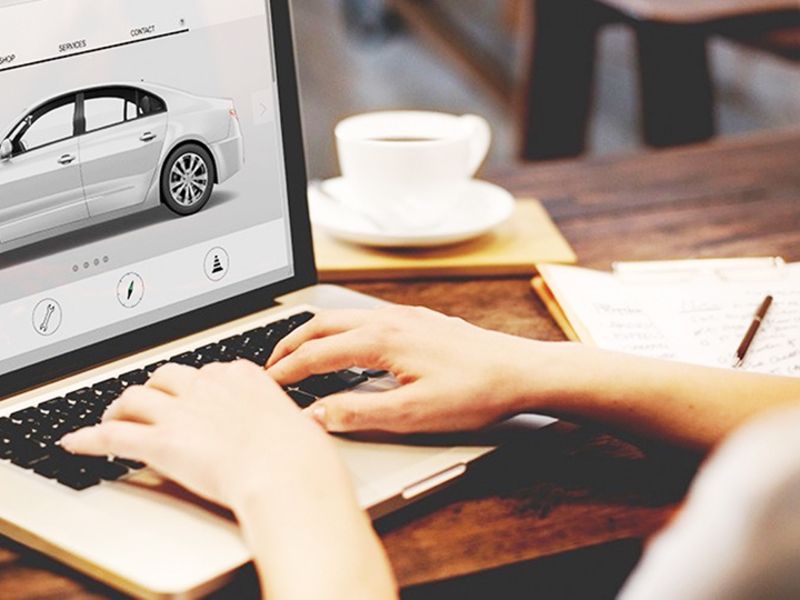
It’s not that car dealers don’t want to sell online; it’s just that most of them can’t.
Automotive e-commerce — a true start-to-finish transaction — requires a sophisticated digital platform that not only makes the vehicle look good, but links to inventory management systems, complex pricing models, trade-in valuations and third-party lenders. Of the 17,000 or so new-car dealerships in the U.S., as tracked by the National Automobile Dealers Association, the vast majority are relatively small businesses without the digital chops (or the capital) to build such an Internet engine.
Digital Motors Corp. says it can do it for them. The Irvine, Calif.-based startup says it has crafted a plug-and-play software package can give dealerships a seamless online experience for their customers.
CEO Andreas Hinrichs, who spent almost 20 years in various finance roles at Daimler, was planning on a July debut, but the pandemic forced his hand. Dealerships who had gotten wind of the startup began calling him as the coronavirus — and lockdowns — intensified, begging him to launch early. On March 23, four months ahead of schedule, Digital Motors switched on its first client, the Orange Coast Fiat Chrysler dealer in Costa Mesa, Calif.
The months since, Hinrichs said, have been a blur. Bloomberg caught up with the founder to discuss how much COVID has accelerated digital car-shopping and why e-commerce for cars is still so far behind that of other industries.
Q: What made you think there was an opportunity here?
A: When you go to a dealer website, it’s always about, ‘Give me your name, phone number and email,’ just to pull you into what the industry refers to as the four-hour grind. Now contrast this with the consumer experience that is provided by Tesla, which is the only new car that a customer can actually buy online. It takes 10 or 15 minutes. We’re taking the best of both worlds between the brick-and-mortar dealer and the online experience and we allow the customer to go as far online as they want. Then we seamlessly transition into the dealership at any point in time. We don’t feel that disrupting the dealer is the right way to go — empowering the dealer is the right way to go.
What has been the most difficult part?
The hardest part is taking the millions of potential inputs and combining and presenting them in a sensible way. It’s the last mile that we solve very efficiently. We want to not only make car buying and financing as simple as buying something on Amazon, we actually want to make it better and become the benchmark for what a seamless online transaction looks like.
How do you make money?
As a SaaS [software as a service] platform, we are charging a monthly subscription fee to our dealers and there’s a onetime setup fee to get it all going. What we refuse to do is to tap into the transactions themselves. We don’t want in any way to put our hands on the cookie jar.
What share of people go all the way through to a transaction versus bouncing out and staying in limbo?
More than half of monthly sales of our dealer clients are from customers engaged with the online store, either end to end or for some part of the process.
COVID-19 has been a growth engine for you.
So we were not smart enough to predict the pandemic. Basically, we bet on the trend that, ultimately, automotive has to become digitally transactional. But then COVID served as a massive accelerator. Our original game plan was to launch the platform at the beginning of July and we basically jumped that by a full quarter. We have amazing momentum now in the market place. We will be in several hundred stores by the end of the year and then several thousand stores next year.
If you could put a number on it, how much did COVID-19 accelerate the shift to digital?
Because we’re a brand-new company and we were already targeting the most progressive dealers, for us it translates into scaling more rapidly than we had originally planned. But for the industry overall it’s probably a three-year acceleration in terms of mindset and adoption. There were already a lot of companies that proclaim to be digital retailing providers, but they are either fractions of the process or they are glorified lead generators. Generally, they are all very much consumer-facing, versus dealer-facing. We’re kind of the man in the middle. So we’re not trying to change the entire world. We’re just trying to eliminate the pain points that exist.